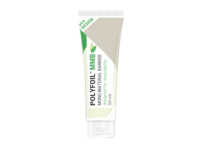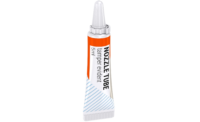Market Trends: Pharmaceutical Packaging
Pharmaceutical Small High-Barrier Tubes on the Rise
Driving the trend are the myriad protection, compliance and ease-of-use benefits these types of solutions offer.




Many of today’s newer pharmaceutical formulas require more stringent moisture, light or oxygen protection. Many formulas also are becoming more potent, leading to demand for metered dosing in small tube diameters for low (yet powerful) fill volumes. Here, small high-barrier tubes offer attractive user-friendliness and can diminish overpackaging by eliminating the need for secondary packaging such as pouches and barrier blisters. They can also provide increased safety through simplicity; the fewer “moving parts” a package has, the lower the likelihood of accidental misuse by end users.
The Tube Packaging Market
Looking at the larger picture, it’s interesting to note that, according to MarketsandMarkets (marketsandmarkets.com), the worldwide tube packaging market is projected to grow at a compound annual growth rate of 6.9 percent during the forecast period of 2016 to 2021, approaching $9.3 billion by 2021.
The tube packaging market is gaining momentum due to factors that include overall growth in the flexible packaging sector and, in addition to pharmaceutical use, increased demand for small-size packs for cosmetic and personal care products. Additional factors driving the market are advancements in tube technologies and, as noted above, heightened demand for enhanced barrier properties to protect sensitive pharmaceutical products.
Tube Composition
Many marketplaces — including Europe, per the latest news from the European Tube Manufacturers Association — are seeing decreasing demand for aluminum tubes, whose drawbacks include the risk of breakage (most notably via tears) and are instead converting to laminate and plastic-based tubes, such as poly-foil tubes that incorporate specially made laminates with unique properties. These tubes offer better aesthetics, safety and simpler integration of enhanced delivery systems.
Multi-layered poly-foil tubes reliably protect products against light, oxygen, water vapor diffusion and substance migration while improving the overall user experience. Another benefit is that they are customizable from the point of creation: Poly-foil tubes are available in different material combinations that can vary, depending on the resistance of the filling material and the desired feel. Standard poly-foil tubes generally comprise some combination of PE/ALU/PE composite, while a combination of PP/ALU/PP is suitable for products requiring sterilization.
Ideal for small-dosage high-barrier packaging, poly-foil tubes offer high compatibility with liquid or semi-solid medication. They can be affixed with airless pumps or droppers for seamless drug delivery and can incorporate tamper-proof and child-resistant features.
Compared to aluminum especially, poly-foil options also improve branding opportunities because they retain their original shape even after product is removed and, thanks to invisible longitudinal seams, allow for printing over a full 360-degree palette.
Global Trends
Although the focus of this article is the North American market, it’s interesting to take note of some global trends. While North America has seen a focus on new products requiring unit dosing and high-end nozzle tip tubes offering more accurate dispensing, the European demand for small diameter tubes has been increasing for the past eight years.
Europe’s near-decade-long uptick seems to be in response to the ophthalmic, veterinary and greater healthcare markets’ growing needs for single-dose packaging. Not surprisingly, linear growth for a similar packaging platform from this trifecta of sectors has triggered infrastructure investments, leading to more operational fill/seal machinery and, in turn, expanded options to meet the demands for these small tubes.
A similar growth pattern is possible here in North America, with prominent pharma packaging players.
Applications
A wide variety of current applications lend themselves particularly well to small, high-barrier tubing — and more are likely just around the corner. For example, there has been increased demand in over-the-counter (OTC) products, mostly for sampling and travel sizes. At Neopac, we also have started to field requests for repacking and tailoring hospital medications. Emergency medicines also seem to be an ideal application, as “ready-to-plug” and “ready-to-mix” tubes can help avoid the use of needles.
We also foresee increased demand for finicky formulas, such as those requiring complex solvents, high-alcohol content or high viscosity, carbomere gel, diclofenac or ibuprofen, retinol or Vitamin D3. Such products need a package that can overcome the constraints placed on them by their chemical makeup. Here, poly-foil tubes make sense from a material safety standpoint since they can be FDA-approved in adherence to the drug master file.
The cannabis sector is another growth area. As Canada and an increasing number of U.S. states legalize medicinal (and recreational) cannabis, the market for single-dose CBD pain-relief creams, ointments and oils is growing. It also represents another industry where the ability to affix child-resistant features to small tubes is both welcome and vital. In oral care, gingival and gum treatments such as liquid bandages and drops present an opportunity.
Ophthalmology also lends itself to the small-diameter, high-barrier tube market as companies seek to move away from aluminum tubes in order to improve safety and quality. For example, Neopac recently introduced the multi-dose SteriDrop tube that protects preservative-free eyedrops from microbiological contamination before, during and after initial consumer use for up to 30 ml, which lasts for a 90-day-treatment with one single package.
Solutions Tailored to Customer Needs
Small tubes can help solve large problems due, in no small part, to their diminutive size being suitable for ultra-customization. In one case, Neopac had a customer looking to take advantage of an innovative new formula that could make drug delivery more patient friendly — and actually prevent the need for surgical intervention or injections.
We partnered with our customer to create a tube for its highly potent single-dose treatment to fight skin cancer with just 0.5ml content. To do so, we created our smallest tube ever: just 10mm in diameter. Quite cost-attractive, this development has triggered a large amount of industry interest.
A combination of factors has led to increased market demand for small, high-barrier tubes, including more sensitive pharma products requiring stringent protection from moisture, gases and light; the desire to circumvent costly secondary and even tertiary packaging options; and sector-specific issues such as easier storage, user customization and, in the case of cannabis-based products, legalization.
Looking ahead, some experts say e-commerce lends itself to increased demand for smaller packs, which makes sense considering the smaller and lighter a package is the less costly its postage expense. Considering how prevalent e-commerce has become in the U.S. and worldwide, this bodes well for smaller, sturdier packaging platforms.
Visit neopac.com for more information.
Looking for a reprint of this article?
From high-res PDFs to custom plaques, order your copy today!










